Teak Wading Staff (DIY Project)
Posted: Sun Jun 01, 2014 12:08 pm
Last April I got out fishing with Chris Stewart (Tenkarabum) and he had a nice wading staff, that he had made himself. After watching him use his wading staff, I wanted one of my own. As I watched Chris fish, he carefully used his wading in some very cold fast water, and used his staff to transition from a kneeling stealth position, without loosing balance. At the time, I had asked Chris many questions about how he had made the staff and squirreled away some ideas so I could make my own.
I finally got around to making mine this weekend. A quick trip to Walmart and the local Ace Hardware store, allowed me to gather the necessary materials (camouflage parachute cord, broom handle, 7/8" diameter black rubber feet for chair legs, and a carabiner clip). Total cost of materials was around $18 bucks (plus some elbow grease).
Here is are some photos of my finished wading staff. The colors (green camo rope wrap, black hardware and rubber foot) were picked to maintain a stealthy approach.
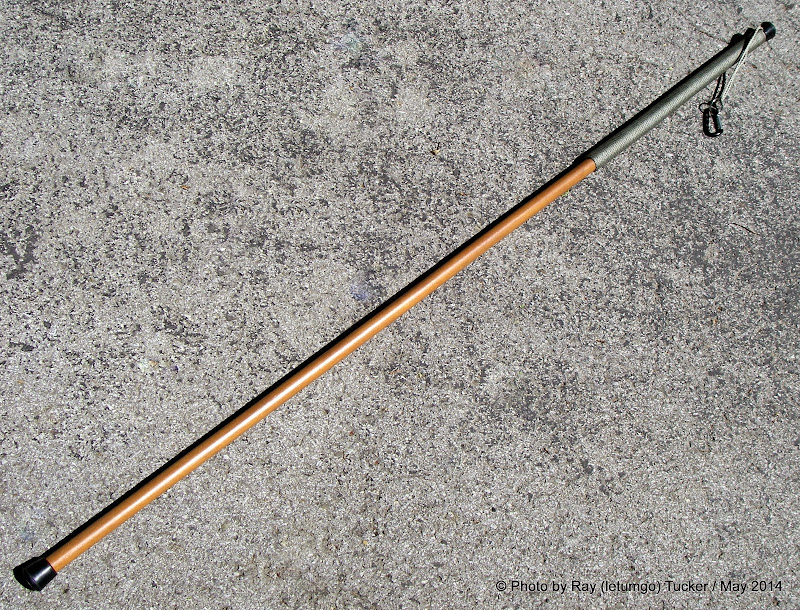
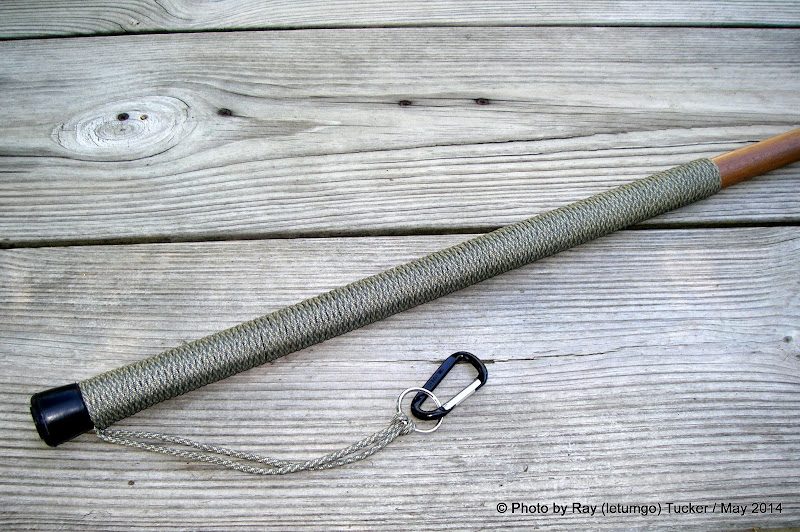
The top of the staff is about even with the top of my shoulder.

The bottom of the rope grip is about 3" below the bottom of my hand, when my elbow is flexed at a 90° bend. Chris recommends running a bead of superglue around the top and bottom edge of the rope grip, to ensure it does not slip over a period of prolonged use.

The rope is wrapped very tightly around the staff, forming a comfortable grip which prevents your hand from slipping, even when they are wet from fishing, or when the handle has been in the water.
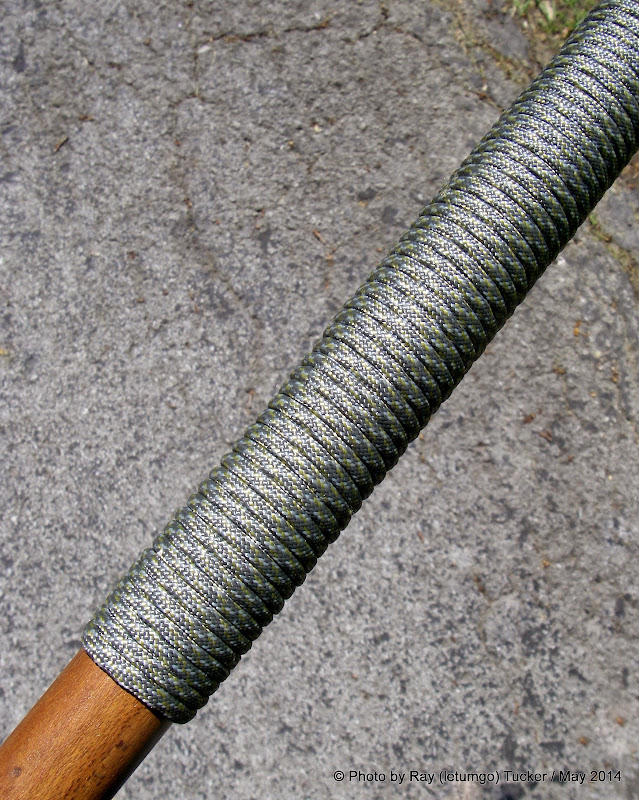
Top End - Rubber protector and loop for carabiner
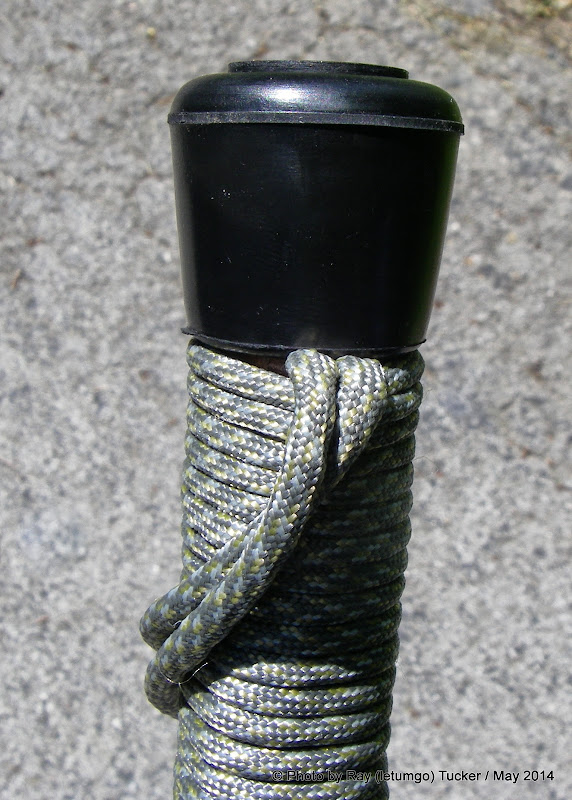
Bottom End

I'm pretty sure the handle is made of teak wood. The label on the handle indicate that it was wood from Indonesia. When I cut off the threaded end (broom handle) the wood had a nice uniform grain. It feels nice and solid, without being overly heavy.
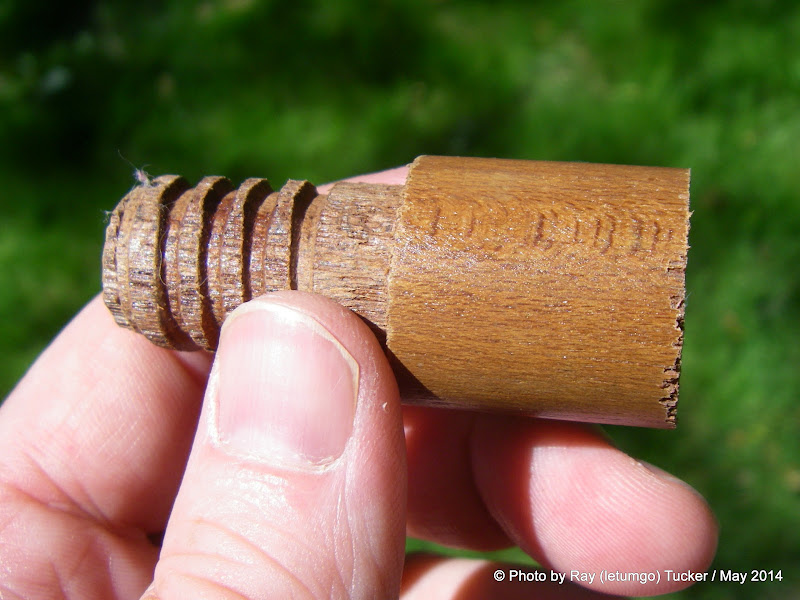
Lesson Learned:
I found a simple way of making the wraps. To start I formed a long loop, to hold the caribiner at the top end. The rope is doubled back on itself and runs the full length under the grip wraps. The wraps are then started at the bottom end and wrapped upwards towards the top of the staff. I temporarily taped the loop to the top end with masking tape. This helped keep the loop from swinging around and getting tangled with the rope during the wrapping process.
After struggling for a while, I found a simple way to make secure wraps. I held the staff handle horizontal (parallel to the floor) and stood on the rope with one foot. I then had both hands free, to twist the staff and ensure the wraps nested tightly against one another. I could adjust the tension by simply lifting upwards on the staff, while holding the rope in place under the bottom of my foot. The wraps are formed very similar to the way you would make wraps on a fishing pole.
I finally got around to making mine this weekend. A quick trip to Walmart and the local Ace Hardware store, allowed me to gather the necessary materials (camouflage parachute cord, broom handle, 7/8" diameter black rubber feet for chair legs, and a carabiner clip). Total cost of materials was around $18 bucks (plus some elbow grease).
Here is are some photos of my finished wading staff. The colors (green camo rope wrap, black hardware and rubber foot) were picked to maintain a stealthy approach.
The top of the staff is about even with the top of my shoulder.
The bottom of the rope grip is about 3" below the bottom of my hand, when my elbow is flexed at a 90° bend. Chris recommends running a bead of superglue around the top and bottom edge of the rope grip, to ensure it does not slip over a period of prolonged use.
The rope is wrapped very tightly around the staff, forming a comfortable grip which prevents your hand from slipping, even when they are wet from fishing, or when the handle has been in the water.
Top End - Rubber protector and loop for carabiner
Bottom End
I'm pretty sure the handle is made of teak wood. The label on the handle indicate that it was wood from Indonesia. When I cut off the threaded end (broom handle) the wood had a nice uniform grain. It feels nice and solid, without being overly heavy.
Lesson Learned:
I found a simple way of making the wraps. To start I formed a long loop, to hold the caribiner at the top end. The rope is doubled back on itself and runs the full length under the grip wraps. The wraps are then started at the bottom end and wrapped upwards towards the top of the staff. I temporarily taped the loop to the top end with masking tape. This helped keep the loop from swinging around and getting tangled with the rope during the wrapping process.
After struggling for a while, I found a simple way to make secure wraps. I held the staff handle horizontal (parallel to the floor) and stood on the rope with one foot. I then had both hands free, to twist the staff and ensure the wraps nested tightly against one another. I could adjust the tension by simply lifting upwards on the staff, while holding the rope in place under the bottom of my foot. The wraps are formed very similar to the way you would make wraps on a fishing pole.
